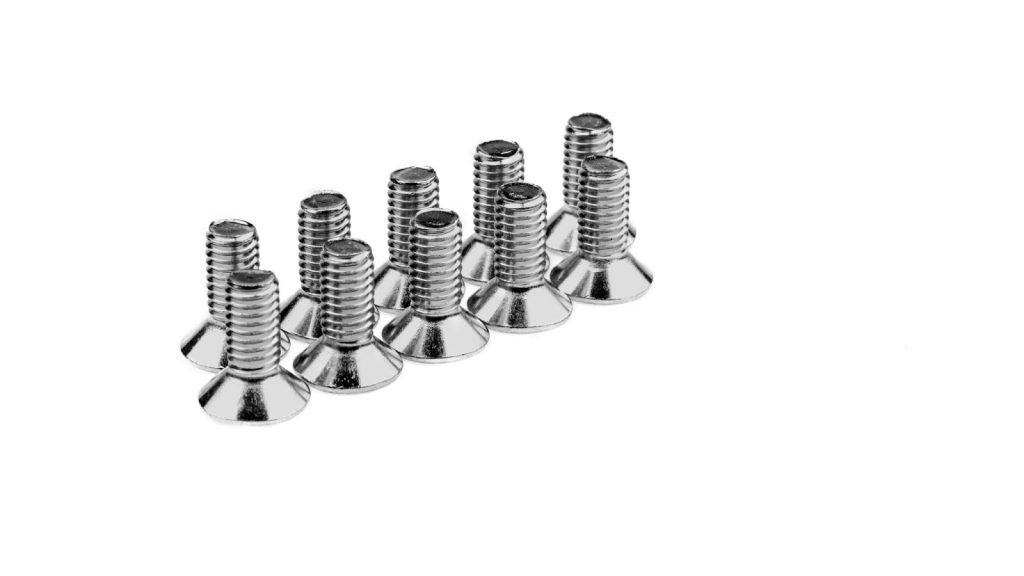7 Tips for Using Set Screws Effectively
Set screws, also known as grub screws, are threaded fasteners without a traditional head, designed to secure one object within or against another, such as fixing a gear to a shaft.
Their effectiveness depends on proper selection and application.
This article provides seven essential tips for using set screws effectively, addresses frequently asked questions and introduces CNRL, a reputable manufacturer of high-quality set screws.

Tips to Consider to Use Set Screws Effectively
#1. Choose the Right Type of Set Screw
Selecting the appropriate set screw type is crucial for ensuring a secure and durable connection. Common types include:
- Cup Point: Features a concave tip that grips the mating surface, ideal for high-torque applications.
- Flat Point: Has a flat tip that contacts the surface evenly, suitable for applications requiring frequent adjustments.
- Cone Point: Comes with a sharp, cone-shaped tip that penetrates the surface, providing a stronghold for permanent fixtures.
- Knurled Cup Point: Similar to the cup point but with knurled edges for enhanced grip, ideal for applications subject to vibration.
Understanding the specific requirements of your application will help in selecting the most suitable set screw type.
#2. Select the Correct Size Set Screw
Choosing the correct size involves matching the diameter and length to the threaded hole and the component being secured.
A screw that’s too small may lack holding power, while one that’s too large can damage threads.
Consulting manufacturer specifications for load-bearing capacity and thread pitch is advisable.
Here’s a conversion chart for common set screw sizes:
| US Screw Size | Decimal (inches) | Metric (mm) |
| #0 | 0.060 | 1.524 |
| #1 | 0.073 | 1.854 |
| #2 | 0.086 | 2.184 |
| #3 | 0.099 | 2.514 |
| #4 | 0.112 | 2.845 |
| #5 | 0.125 | 3.175 |
| #6 | 0.138 | 3.505 |
| #8 | 0.164 | 4.166 |
| #10 | 0.190 | 4.826 |
| #12 | 0.216 | 5.486 |
Note: Always verify dimensions with manufacturer specifications before selection.
#3. Apply the Correct Torque
Applying the appropriate torque ensures a secure fit without damaging components.
Over-tightening can strip threads, while under-tightening may lead to loosening.
Using a torque wrench to apply the manufacturer’s recommended torque settings is essential for optimal performance.
#4. Ensure Proper Alignment
Before tightening, ensure that components are properly aligned. Misalignment can cause uneven pressure, leading to premature wear or failure.
Taking the time to verify alignment ensures even load distribution and long-term reliability.
#5. Use Appropriate Tools
Using the correct tools, such as hex keys or screwdrivers that match the set screw’s drive type, prevents damage to the screw and ensures proper tightening.
For example, a hex set screw requires a matching hex key for effective installation.
#6. Consider Material Compatibility
Selecting a set screw material compatible with the components being secured is vital to prevent galvanic corrosion and ensure structural integrity.
Common materials include stainless steel, alloy steel, and brass, each offering different properties suitable for various environments.
#7. Regular Maintenance and Inspection
Regularly inspecting set screws for signs of wear, corrosion, or loosening is crucial for maintaining the integrity of the assembly.
Periodic maintenance ensures that the set screws continue to perform effectively and can prevent unexpected failures.

More FAQs About Set Screws
What are the common drive types for set screws?
Set screws commonly feature hex (Allen) drives, but slotted and Torx drives are also available, depending on the application.
How do I prevent a set screw from loosening over time?
Using thread-locking compounds, selecting the appropriate point type, and applying the correct torque can help prevent loosening.
Can set screws be reused?
While some set screws can be reused, it’s generally advisable to replace them after removal to ensure optimal performance and safety.
Conclusion: Using Set Screws Effectively
Effectively using set screws involves careful consideration of type, size, torque, alignment, tools, material compatibility, and maintenance.
By following these tips, you can ensure secure and reliable connections in your applications.
Getting to Know CNRL: Your Trusted Screw Manufacturer
CNRL is a leading manufacturer specializing in high-quality set screws and other fastening solutions.
With a commitment to precision engineering and customer satisfaction, CNRL offers a comprehensive range of set screws in various sizes, materials, and point styles to meet diverse industrial needs.
Their products adhere to stringent quality standards, ensuring durability and performance in demanding applications.
For more information on CNRL’s offerings, contact us today.
Resources
CNRL Fasteners uses only high-quality sources, including peer-reviewed studies, to support the facts within our articles. Our commitment to accuracy and reliability ensures that readers receive well-researched information they can trust.